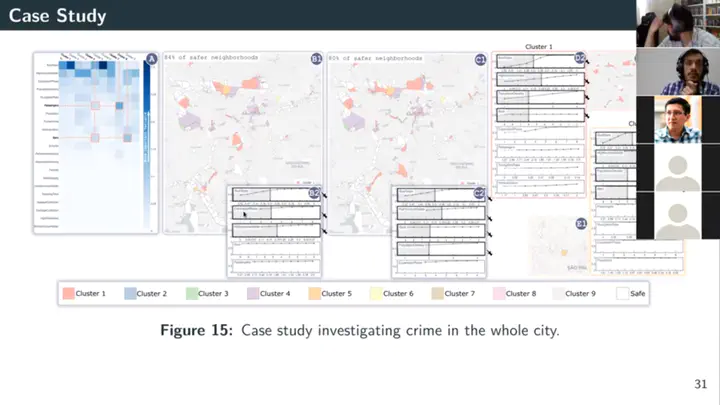 Seminário EMAp: Exploring counterfactual antecedents on crime analysis
Seminário EMAp: Exploring counterfactual antecedents on crime analysis
Abstract
Mining counterfactual antecedents became a valuable tool to mine knowledge and explain machine learning models. It consists of generating synthetic samples from an original sample to achieve the desired outcome in a machine learning model. It can be used to analyze the impact of socioeconomic and urban variables in crime by understanding which changes in a set of variables could alter a region’s definition from unsafe to safe. To help decision-makers interpret crime (and other tasks) define public policies (and other decisions), we propose two methodologies: MAPOCAM and CounterCrime. (1) MAPOCAM is a tree-based search that generates a diverse set of Pareto-optimal counterfactual antecedents by relying on multi-objective concepts. (2) CounterCrime uses various interactive visual metaphors on crime analysis using counterfactual antecedents. We organize our analysis at three levels, whole city, region group, and at the region level to facilitate exploration. Both methodologies empower users to inspect multiple counterfactual antecedents for the best interventions and have a broader understanding of the prediction.